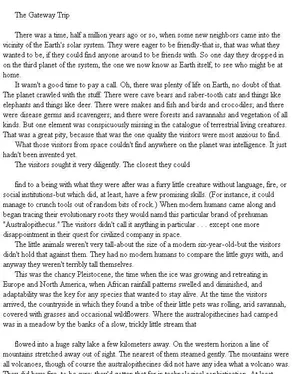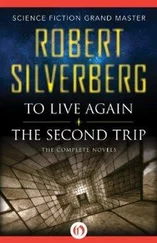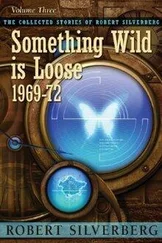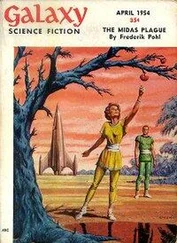Pohl, Frederik - The Gateway Trip
Здесь есть возможность читать онлайн «Pohl, Frederik - The Gateway Trip» весь текст электронной книги совершенно бесплатно (целиком полную версию без сокращений). В некоторых случаях можно слушать аудио, скачать через торрент в формате fb2 и присутствует краткое содержание. Жанр: Старинная литература, на английском языке. Описание произведения, (предисловие) а так же отзывы посетителей доступны на портале библиотеки ЛибКат.
- Название:The Gateway Trip
- Автор:
- Жанр:
- Год:неизвестен
- ISBN:нет данных
- Рейтинг книги:4 / 5. Голосов: 1
-
Избранное:Добавить в избранное
- Отзывы:
-
Ваша оценка:
- 80
- 1
- 2
- 3
- 4
- 5
The Gateway Trip: краткое содержание, описание и аннотация
Предлагаем к чтению аннотацию, описание, краткое содержание или предисловие (зависит от того, что написал сам автор книги «The Gateway Trip»). Если вы не нашли необходимую информацию о книге — напишите в комментариях, мы постараемся отыскать её.
The Gateway Trip — читать онлайн бесплатно полную книгу (весь текст) целиком
Ниже представлен текст книги, разбитый по страницам. Система сохранения места последней прочитанной страницы, позволяет с удобством читать онлайн бесплатно книгу «The Gateway Trip», без необходимости каждый раз заново искать на чём Вы остановились. Поставьте закладку, и сможете в любой момент перейти на страницу, на которой закончили чтение.
Интервал:
Закладка:
So Wu had to face the problem of every single prospector: If he took his lander down to the surface of the planet, no one would be
left in the ship. If anything happened to him on the surface, no one would be there to rescue him. He was completely on his own.
His other problem was that "Earth-type" was only a very approximate description of the world he had to explore. "Earth-type" meant that the planet was about the right size, and that it had an atmosphere and a temperature range that permitted water vapor in the air, liquid water in its shallow seas, and frozen water on its colder parts. It wasn't heaven, though. Its colder parts included nearly all of the planet. Its best zone was around the equator, and that was not much unlike Labrador.
If there ever had been anything on any other part of its surface, it was now covered with thousands of feet of ice. There was no point in landing on a glacier; Wu had no way of digging down to whatever lay under it. After a lot of searching Wu found a bare outcropping of rock and landed there. By then he wasn't very optimistic anymore. The environment did not look promising-but his instruments gave him better news than he had expected.
There was a tunnel.
Wu had practiced tunnel entry. He even had the necessar~y equipment. Sweating the big power drills into place and erecting the bubble shelter that would protect it from the outside air took all of his strength, and enough time to use up the bulk of his supplies. But he got in.
It was a blue-lined tunnel.
That was discouraging, but as he moved along it he caught glimpses of other colors. When he got to a red segment he found a huge machine-later on, experts decided from his description that it had been a tunnel digger-but he didn't have the strength to lift it, or the equipment (or the courage, for that matter) to try to hack pieces off it. In the green part of the tunnel were bolts of what Wu first took to be cloth but turned out to be the crystalline sheeting the "prayer fans" were made of. In the gold was-the gold.
There were stacks and stacks of little hexagonal Heechee-metal boxes, all sealed. All heavy.
Wu couldn't carry them all, and his energy was running out. He managed to get two of them back to the lander and then took off, with every intention of coming back in a Five.
Unfortunately, when he was safely back on Gateway it turned out that no Five would accept the program that had brought him there. Neither would any of the Threes or Ones that were lying in their docks, waiting for crews.
It seemed that only the One he had found the planet in would take him back.
That didn't work, either. Before he could requisition it and ship out again someone else had taken his One-on a one-way trip.
All Wu had, then, was the two little boxes, but it was their contents that bought him a home in Shensi province. One of them contained heater coils. They weren't operating, but they were close enough to working condition so that human scientists managed to tinker them going. (Later on better and bigger ones were found on Peggy's Planet, but Wu's were still the first.) The other box contained a set of gauges for measuring microwave flux.
Scientists puzzled over the gauges very diligently, but they asked the wrong questions. What they labored to ascertain was how they worked. It did not occur to any of them, just then, to wonder why the Heechee were so curious about millimeter microwave flux. If it
had it might have saved a lot of people a lot of unnecessary confusion.
It was in a tunnel on an otherwise unprepossessing planet that one prospector found the first specimen of the Heechee tunneling machine. It was in a tunnel on the Luna-like satellite of a distant gas giant planet that another found the "camera" that the so-called "fire-pearls" served as "film." And it was in a tunnel that Vitaly Klemenkov found the little device that sparked a whole new industry-and earned him only a pittance.
Klemenkov's is a kind of hard-luck story. What he found was what human scientists came to call a "piezophone." Its main operating part was a diaphragm made out of the same material as the "blood-diamonds" that had littered the tunnel of Venus and many others. The material was piezoelectric: when squeezed it produced an electric current, and vice versa. Of course, there were plenty of blood-diamonds around, though no one had known before Klemenkov that they were basically raw material for piezoelectric devices. Klemenkov had visions of untold riches. Unfortunately, the main communications laboratories on Earth, subsidiaries of the cable and telephone and satellite corporations, developed the Heechee model into something they could manufacture themselves. Klemenkov took it to court, naturally-but who could fight the lawyers of the biggest corporations in the world? So he settled for a small royalty-hardly more, in fact, than an average emperor's income.
There was one other splendidly productive variety of place to find Heechee treasures. But no one knew that at first, although if they had thought of the example of Gateway itself they might have deduced it, and certainly no one knew that these rich lodes were, actually, traps. A woman named Patricia Bover was the first Gateway prospector to report finding one-and, as was so often the case, it did her little good.
MISSION FOOD FACTORY
Patricia Bover set out in a One. She had no idea where she was going. She was pleased that it was a relatively short trip-turnaround in seven days, destination in fourteen-and astonished when her instruments told her that the tiny, distant star that was the nearest to her was actually the old familiar Sun.
She was in the Oort cloud of comets, far beyond the orbit of Pluto, and she was docking on what was clearly a Heechee artifact. A big one: it was eight hundred feet long, she estimated, and it was like nothing anyone had ever before reported finding.
When Bover got into the thing and looked around, she realized she was rich. The thing was absolutely stuffed with machines. She had no idea what they did, but there were so many of them that she had no doubt at all that some of them, maybe many of them, would be as valuable as any heater or tunneler or anisokinetic punch.
The bubble burst when she found out she couldn't get back to Gateway. Her ship wouldn't move. No matter what she did to the controls it remained inert. It not only would not automatically return her to her port of origin, it wouldn't go anywhere at all.
Patricia Bover was stuck, some billions of miles from Earth.
As it turned out, the artifact was still operating; in a part of it that Pat Bover never saw, it was actually still producing food, half a million years after it was left there by the Heechee, out of the raw materials of the comets themselves-carbon, hydrogen, oxygen, and nitrogen, the basic elements that make up most of human diet and body. If Pat had known that-if she had forced herself to investigate the thing-she might have lived quite long while there. (Though not long enough for anyone to get there to rescue her, of course.)
She didn't know that, though. What she knew was that she was in serious trouble. What she did was send a long radio message to Earth, twenty-five light-days away, explaining where she was and what had happened. Then she got into her lander and launched it
in the general direction of the Sun. She took a knockout pill and crawled into the freezer . . . and died there.
She knew the odds were against her. She wasn't properly frozen for any hope of revival, and anyway the chances were small that anyone would ever find her frozen body and try to revive it. And, as a matter of fact, no one ever did.
The Food Factory wasn't the only Heechee artifact in space which doubled as a trap for the unwary. There were altogether twenty-nine of these large objects-they were called "collection traps"-somewhere in the galaxy.
Читать дальшеИнтервал:
Закладка:
Похожие книги на «The Gateway Trip»
Представляем Вашему вниманию похожие книги на «The Gateway Trip» списком для выбора. Мы отобрали схожую по названию и смыслу литературу в надежде предоставить читателям больше вариантов отыскать новые, интересные, ещё непрочитанные произведения.
Обсуждение, отзывы о книге «The Gateway Trip» и просто собственные мнения читателей. Оставьте ваши комментарии, напишите, что Вы думаете о произведении, его смысле или главных героях. Укажите что конкретно понравилось, а что нет, и почему Вы так считаете.












